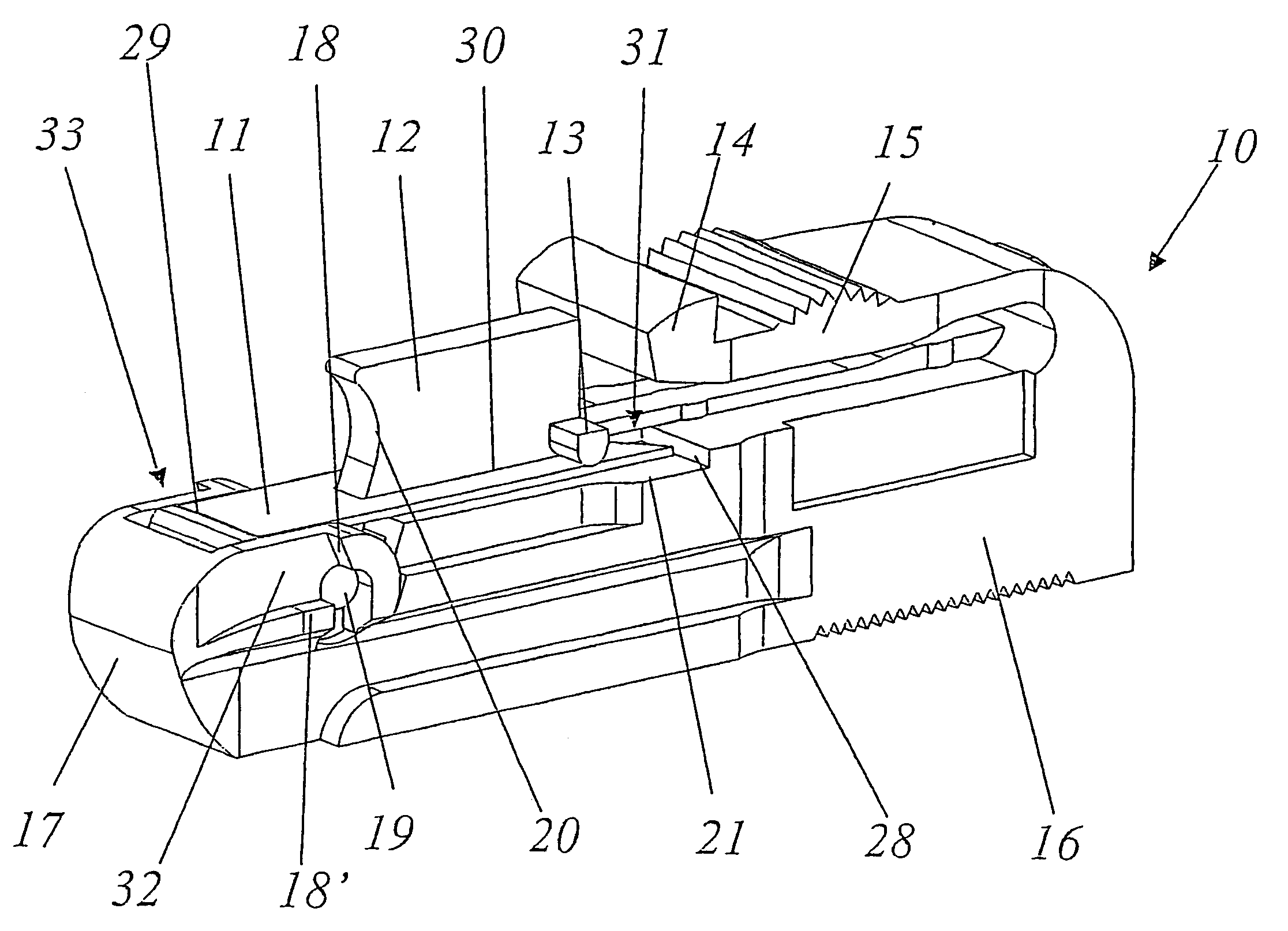Optical connector with protective cover and leaf spring
a technology of optical connectors and leaf springs, applied in the field of optical plugin connections, can solve the problems of all the greater the size of the connectors, and achieve the effect of reducing the size of the connector
- Summary
- Abstract
- Description
- Claims
- Application Information
AI Technical Summary
Benefits of technology
Problems solved by technology
Method used
Image
Examples
Embodiment Construction
[0023]In FIGS. 1 to 3, a preferred exemplary embodiment of a connector 10 according to the invention is reproduced in a perspective representation, the cover 17 provided on the connector 10 assuming different positions in the figures. The connector 10 has a housing 16 made of a suitable plastic, through which there runs in the longitudinal direction, along a connector axis 27 (FIG. 2), a through-bore, which emerges to the outside at the rear end of the connector 10 in a first opening 23 (FIG. 2) and at the front end in a second opening 25 (FIG. 3). The cable with the optical fiber is introduced into the connector 10 through a kink preventer by being inserted into the rear, first opening 23. From the front, second opening 25 there protrudes from the interior of the connector 10 a ferrule 24, in the central bore of which the end of the optical fiber 26 is accommodated (FIG. 3). For further details of the internal structure, reference should be made to the configuration given by way of...
PUM
 Login to View More
Login to View More Abstract
Description
Claims
Application Information
 Login to View More
Login to View More - R&D
- Intellectual Property
- Life Sciences
- Materials
- Tech Scout
- Unparalleled Data Quality
- Higher Quality Content
- 60% Fewer Hallucinations
Browse by: Latest US Patents, China's latest patents, Technical Efficacy Thesaurus, Application Domain, Technology Topic, Popular Technical Reports.
© 2025 PatSnap. All rights reserved.Legal|Privacy policy|Modern Slavery Act Transparency Statement|Sitemap|About US| Contact US: help@patsnap.com



